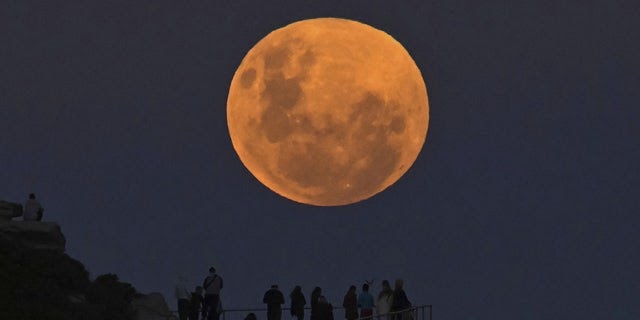After appearing as a glittering full moon on Tuesday, the moon appeared tinged with a reddish glow in the early hours of Wednesday. The super “Blood Moon” captured the attention of viewers across the world.
According to NASA, the Blood Moon occurs during a total lunar eclipse when the Earth aligns itself between the moon and the sun.
🌓🌏🌞 The supermoon eclipse is underway! If it's visible where you are, you'll see the full Moon enter Earth’s shadow, with totality peaking at 4:18am PT (11:18 UT).
If you're not in the path, you can see a visualization through the eyes of @NASAJPL: https://t.co/HT9M4S8icV pic.twitter.com/nbdpApQiTa
— NASA (@NASA) May 26, 2021
“When this happens, the only light that reaches the moon’s surface is from the edges of the Earth’s atmosphere. The air molecules from Earth’s atmosphere scatter out most of the blue light. The remaining light reflects onto the moon’s surface with a red glow, making the moon appear red in the night sky,” the agency explained on its website.
A supermoon occurs when the side of the moon facing Earth is fully illuminated by the sun and is at the closest point in its orbit around Earth. Notably, this Blood Moon is a combination of a total lunar eclipse and May’s full Flower Moon, which is classified as a supermoon.
The totality of the Blood Moon lunar eclipse would last for around 14 minutes and 30 seconds and the moon.

While the super Blood Moon and its total eclipse phase is distinctly visible over eastern Asia, the Pacific Ocean, and parts of the western U.S., most of the East Coast and central U.S. gets the short end of the stick as the moon is below the horizon at the time of the full eclipse.
In a Monday blog post, NASA’s Gordon Johnston said that explained that while East Coast viewers would only witness the “barely-detectable start of the eclipse as the moon sets,” Americans lucky enough to have both clear skies and a clear view of the horizon would be able to really understand their place in the alignment.
“You can see the sunrise, then turn 180 degrees to see the curved shadow of the round Earth starting to fall across the edge of the moon as the moon sets,” he instructed.
The supermoon would pass through the full shadow of the Earth at approximately 5:45 a.m. ET.
The next supermoon – the super “Strawberry Moon” will be visible on the East Coast on June 24 and there are three more eclipses scheduled to take place before 2022.
However, the next total lunar eclipse won’t happen over North America until May 2022.

Leave a Reply